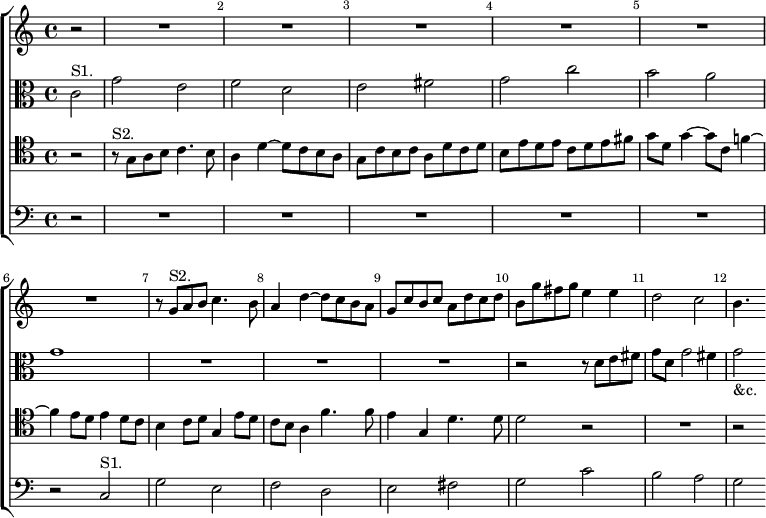fugue) also needs modification (§ 170). We have quoted the whole exposition, as it shows a very frequent manner of commencing a double fugue.
373. After the first entries of the two subjects and answers, we see other entries in the same keys as before, but differently distributed between the voices. At bar 5, the tenor has the first subject, and the alto the second; in the seventh bar the bass has the first answer, and the alto a modified form of part of the second. Lastly, at bar 10, the first subject is seen again in the treble, while bass and tenor both have the second subject, the tenor being written in double counterpoint in the tenth. When an exposition contains only one entry each of the subjects and answers, it will be very brief. This is the case with the example in § 371, where our extract is immediately followed by the first episode; more frequently, as here, additional entries precede the introduction of any episodical matter.
374. Occasionally after two voices have announced the subjects, the other pair, instead of giving the answers, repeat the subjects, but inverted in their relative positions.
Handel. 'Judas Maccabæus.'


